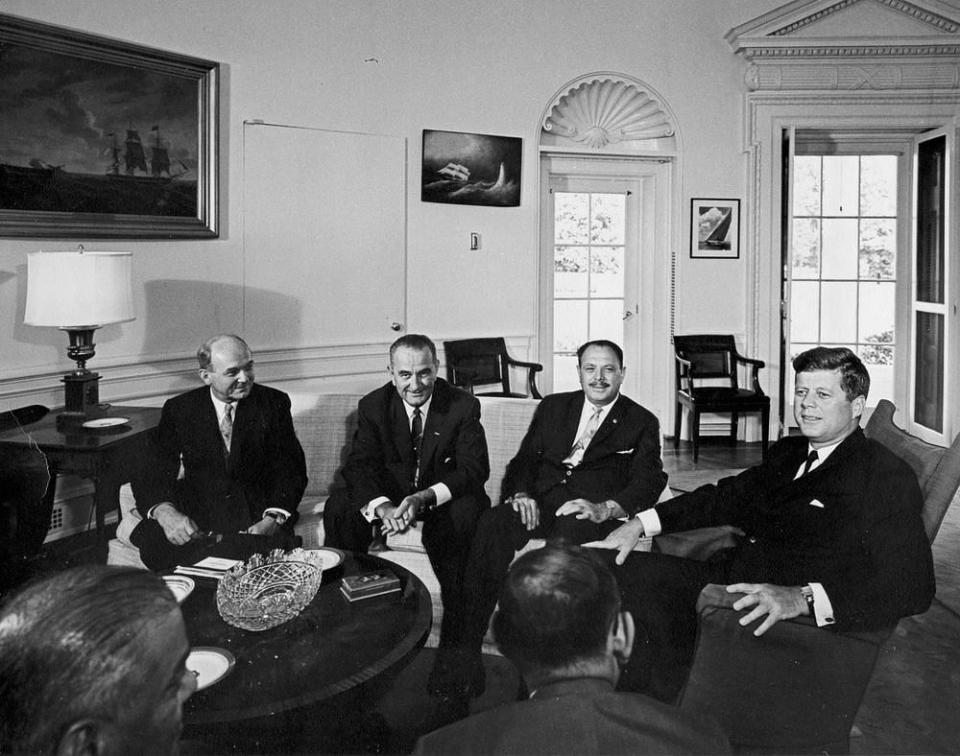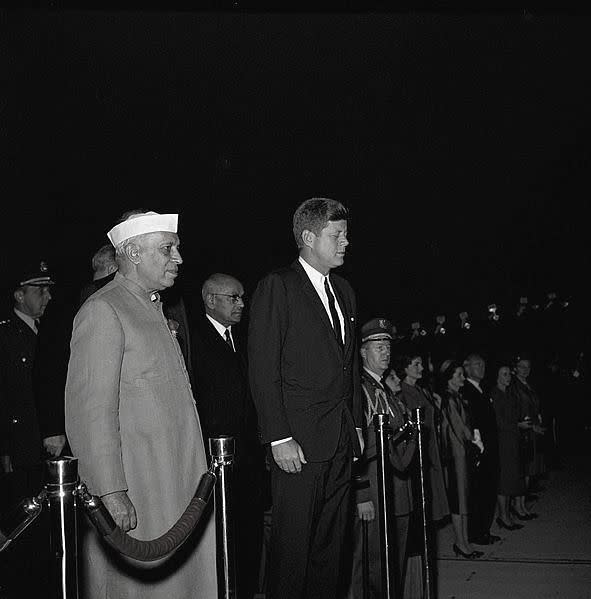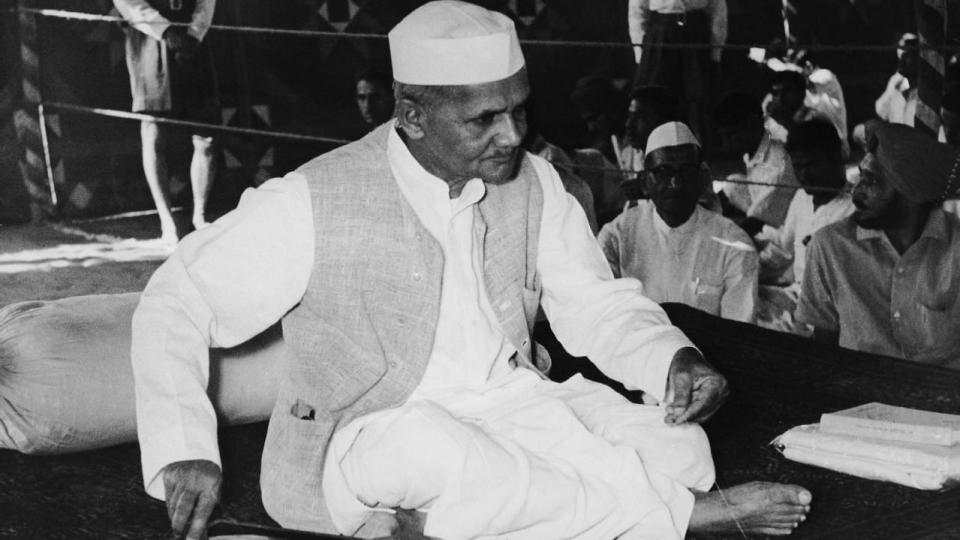What PM Modi Can Learn from PMs Nehru & Shastri About China & US

India and America had to become strong strategic allies.
I have called it an “inevitability of history” in two of my books. So, when Secretary of State Mike Pompeo and Defense Secretary Mark Esper travelled half-way across the world, just six days short of a presidential election which their boss may lose, merely weeks after China’s threatening misadventure that killed 20 Indian soldiers at Galwan Valley, to sign the final foundational agreement and lock India in a security clasp, it signalled an unusual intent to renegade Communists.
Also Read: Life and Times of Lal Bahadur Shastri, India’s 2nd Prime Minister
I should have been thrilled, and I am. But there is also a lurking discomfort, foreboding, lest we become complacent. I will turn to that later, after encapsulating the glorious denouement of two decades:
2002: the Vajpayee government closed GSOMIA, The General Security of Military Information Agreement
2005: then Defence Minister Pranab Mukherjee signed a 10-year framework agreement on defence cooperation in June 2005
2008: Prime Minister Manmohan Singh bet his office on the Indo-US Civil Nuclear Treaty
2016: The Logistics Exchange Memorandum of Agreement, LEMOA, was signed by the Modi government
2018: COMCASA, The Communication Compatibility and Security agreement, was executed
2020: And now, BECA, the Basic Exchange and Cooperation Agreement has been enacted, which allows India to feast off America’s satellite ‘eyes’ and geospatial intelligence apparatus straddled across the globe, picking up critical clues to strike hard at enemies
America’s Words Of Assurance On China Are Music To India’s Ears
The American ministers underscored their strong act with even harder words.
Pompeo thundered:
"“Our leaders and citizens see with increasing clarity that the Chinese Communist Party is no friend to democracy, the rule of law, (or) transparency.” "
Esper asserted:
" “We stand shoulder to shoulder… (against) increasing aggression and destabilising activities by China.”"
This is music to India’s ears. Which is why the commentariat has begun an unrestrained celebration, almost as if we have vanquished the Chinese forever, as if there is nothing left to fear or do. A chilling counter-reality is getting drowned in this unseemly hoopla…
Also Read: ‘China Doesn’t See Us as Friends’: Patel’s Letter to Nehru in 1950
But, Here’s The Truth...
The truth is that our economy is astonishingly weak today, while China is gaining ever more strength – at this rate, it could soon become SIX times our size. And this is where my lurking discomfort, foreboding has taken over.
Today we are elated because we seem to believe that Uncle Sam will take care of everything. But we have seen this scary movie before. In the 1960s. And while the circumstances today are vastly different from those blighted years, we were forced to learn a tough lesson of survival then, which is perhaps as relevant today.
Rewind To 1962 China War And The Famines That Followed
India’s 1962 border war with China provided the US with an unexpected opportunity to help India without irritating Pakistan. After all, Pakistan President Ayub had repeatedly cited repelling Communism as the main justification for Pakistan’s acquisition of US arms; why would he object to India getting them for the same reason?
President Kennedy went out of his way to assure Ayub that any US arms aid to Delhi would be strictly for India’s ‘immediate needs’ and ‘for use against China only’.

The US was careful to avoid shipping heavier materiel that could be used against Pakistan. By November, with the Chinese dominating, a panicked Prime Minister Nehru put Washington in an even tougher spot by asking Kennedy to supply American air support for India’s forces. Fortunately, China declared a ceasefire and retreated before the Kennedy administration could respond, saving Washington from having to make that decision.

Unfortunately, President Kennedy was assassinated, and Lyndon Johnson took over the White House. The baton had passed to Prime Minister Lal Bahadur Shastri in India. That also coincided with India’s Pakistan War and inhuman famines. When Delhi came asking Washington in 1965 to shore up its wheat aid program, known as PL-480, President Johnson said no. He had abruptly halted the automatic renewal of all US aid schemes for India and Pakistan, insisting his government take ‘a hard new look… before we spend a lot more money.’

In 1954, the year PL-480 began, India imported 1 million tons of grain; ten years later, imports had risen to 5.5 million tons, a jump only partly attributable to population growth. With India facing severe drought—grain production plummeted from 89 to 72 million tons that year—Johnson adopted a ‘short tether’ approach, approving shipments of two months’ and then one month’s worth of grain at a time, providing humanitarian aid but hoping to force the government to reform its moribund agricultural policy. The following year, with the drought persisting, Johnson went even further, implementing what came to be known as the ‘ship to mouth’ policy—essentially keeping the supply line so short there was no cushion against famine. A newspaper in Alabama rubbed salt into the country’s wounds saying ‘New Indian Leader Comes Begging’.
Also Read: Would China Have Won In 1962 Had Nehru Listened to Patel?
How India Became Agriculturally ‘Atmanirbhar’ Thanks To America’s Snub
United by this indignity, India’s politicians and scientists launched a frontal attack on low crop yields. Norman E Borlaug was a scientist experimenting with hybrid dwarf varieties of wheat in Mexico. C Subramaniam, India’s dynamic new agriculture minister, ordered an experimental planting of these Mexican seeds. They yielded 5,000 kg a hectare, five times the output from Indian varieties. Subramaniam gave permission for direct farmer trials in 150 fields; he even sowed the hybrid seed in the lawns of his bungalow in New Delhi.
In 1966, India imported 18,000 kg of seed from Borlaug; by 1968, the wheat harvest increased to 17 million tons from 12 million in 1964. Grain production scaled over 100 million tons for the first time (this year, we are doing nearly 300 million tons!); India grandly called this turnaround its Green Revolution. More big labels followed.
Operation Flood in 1970 spurred milk production. An Oilseeds Mission doubled production over a decade. The poultry revolution was silent, powered by rising incomes; the annual availability of eggs per person increased from seven in 1961 to nearly seventy-five now!
The Writing On The Wall
India cannot merely depend on American firearms to contain China. Just as we became self-sufficient in agriculture then, we must ignite an economic revolution with double-digit growth and lessen the six-time differential with China to feel truly safe and secure.
. Read more on Opinion by The Quint.Sunday View: The Best Weekend Opinion Reads, Curated Just For YouWhat PM Modi Can Learn from PMs Nehru & Shastri About China & US . Read more on Opinion by The Quint.

